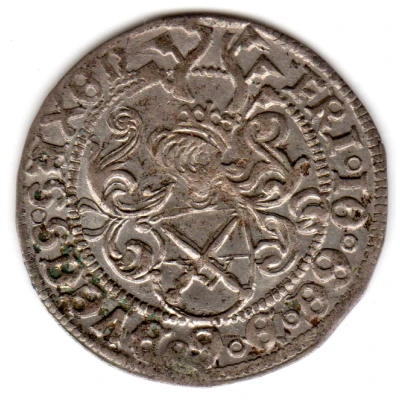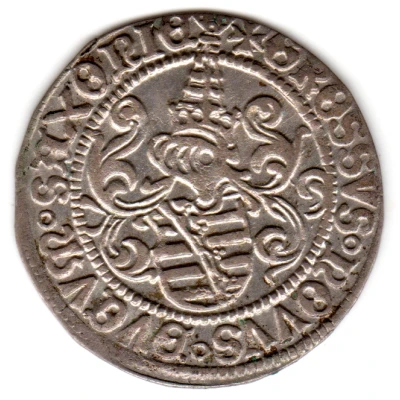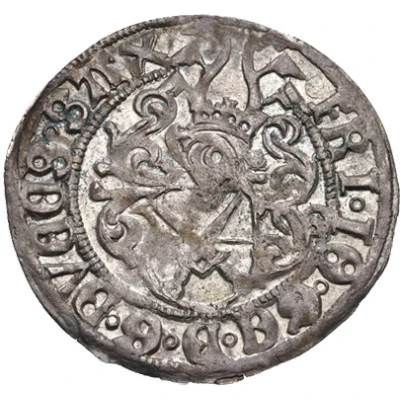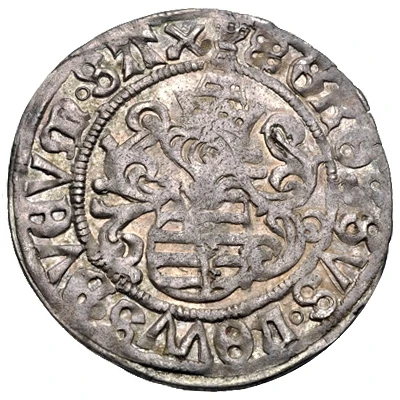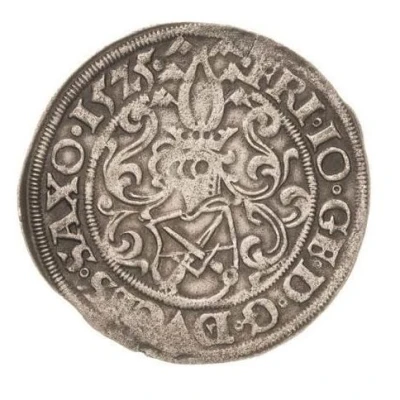
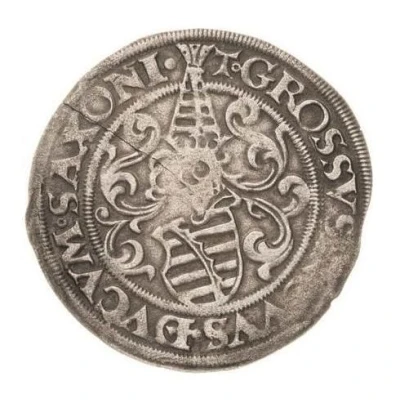

© Leipziger Münzhandlung und Auktion Manfred Höhn
Zinsgroschen - Frederick III, John and George
1525 (1507-1525) years| Billon (.482 silver) | 2.66 g | 25 mm |
| Issuer | Electorate of Saxony (Ernestinian Line) (German States) |
|---|---|
| Prince elector | Frederick III the Wise (Friedrich III) (1486-1525) |
| Duke | John I the Steadfast (1486-1525) George the Bearded (1500-1539) |
| Type | Standard circulation coin |
| Year | 1525 (1507-1525) |
| Value | 1 Groschen = 1⁄24 Thaler |
| Currency | Thaler (1485-1573) |
| Composition | Billon (.482 silver) |
| Weight | 2.66 g |
| Diameter | 25 mm |
| Shape | Round |
| Technique | Hammered |
| Orientation | Medal alignment ↑↑ |
| Demonetized | Yes |
| Updated | 2024-10-05 |
| Numista | N#352941 |
|---|---|
| Rarity index | 100% |
Reverse
Shield of arms of ducal Saxony with helmet above
Mint symbol and inscription around
Script: Latin
Lettering: T · GROSSVS · NOVVS · DVCVM · SAXONI
Translation: New Groschen of dukes of Saxony.
Edge
Plain
Comment
Buchholz MintInteresting fact
One interesting fact about the Zinsgroschen coin is that it was minted during a time of great economic and political change in the German States. The coin was issued by Frederick III, John and George, who were the ruling dukes of the Electorate of Saxony (Ernestinian Line) in the early 16th century. The use of billon, a silver-copper alloy, was a common practice during this time period, as it allowed for the production of coins with a lower silver content, making them more affordable for everyday transactions. Despite its lower silver content, the Zinsgroschen coin still held significant value and was widely used throughout the German States.
